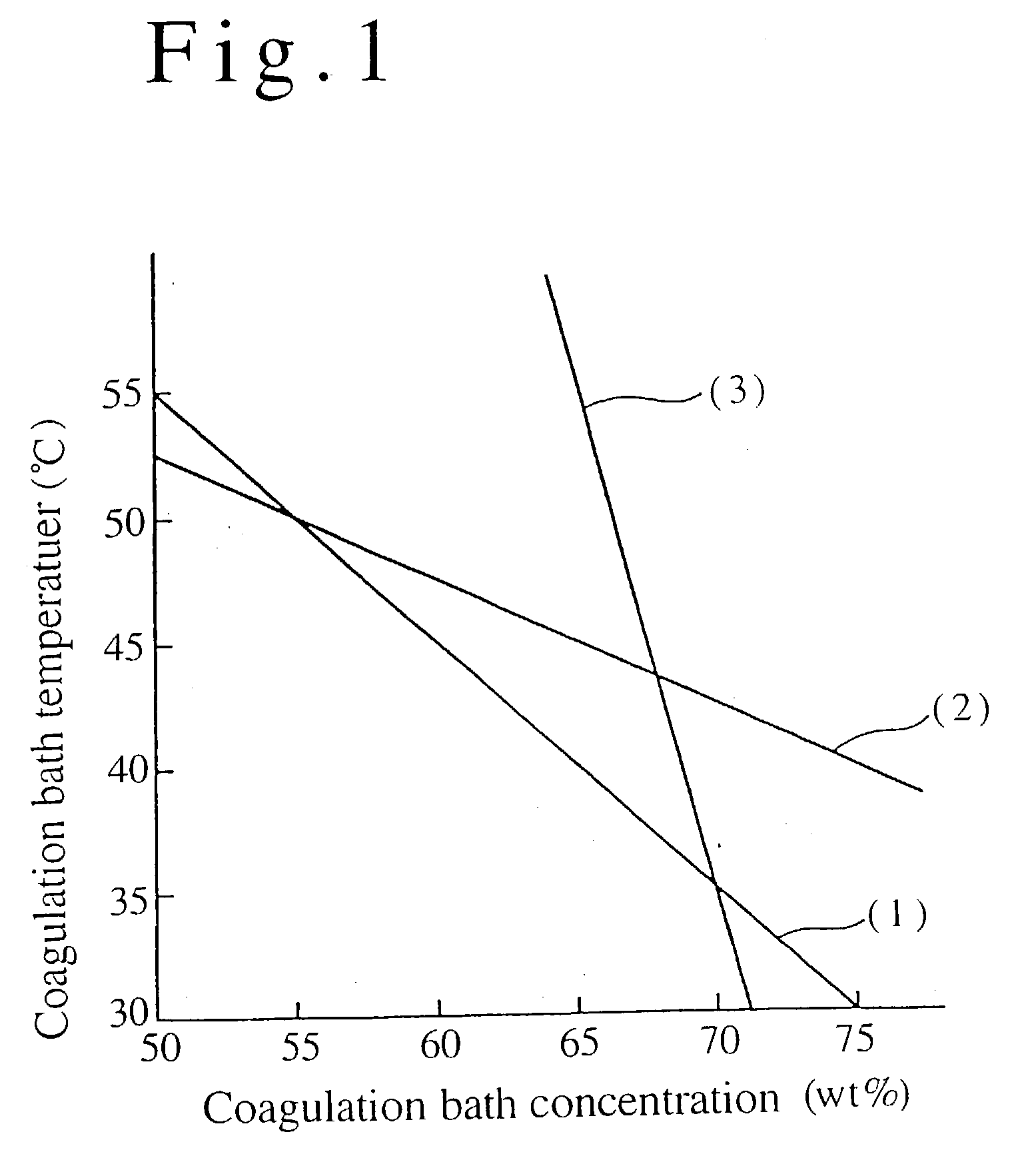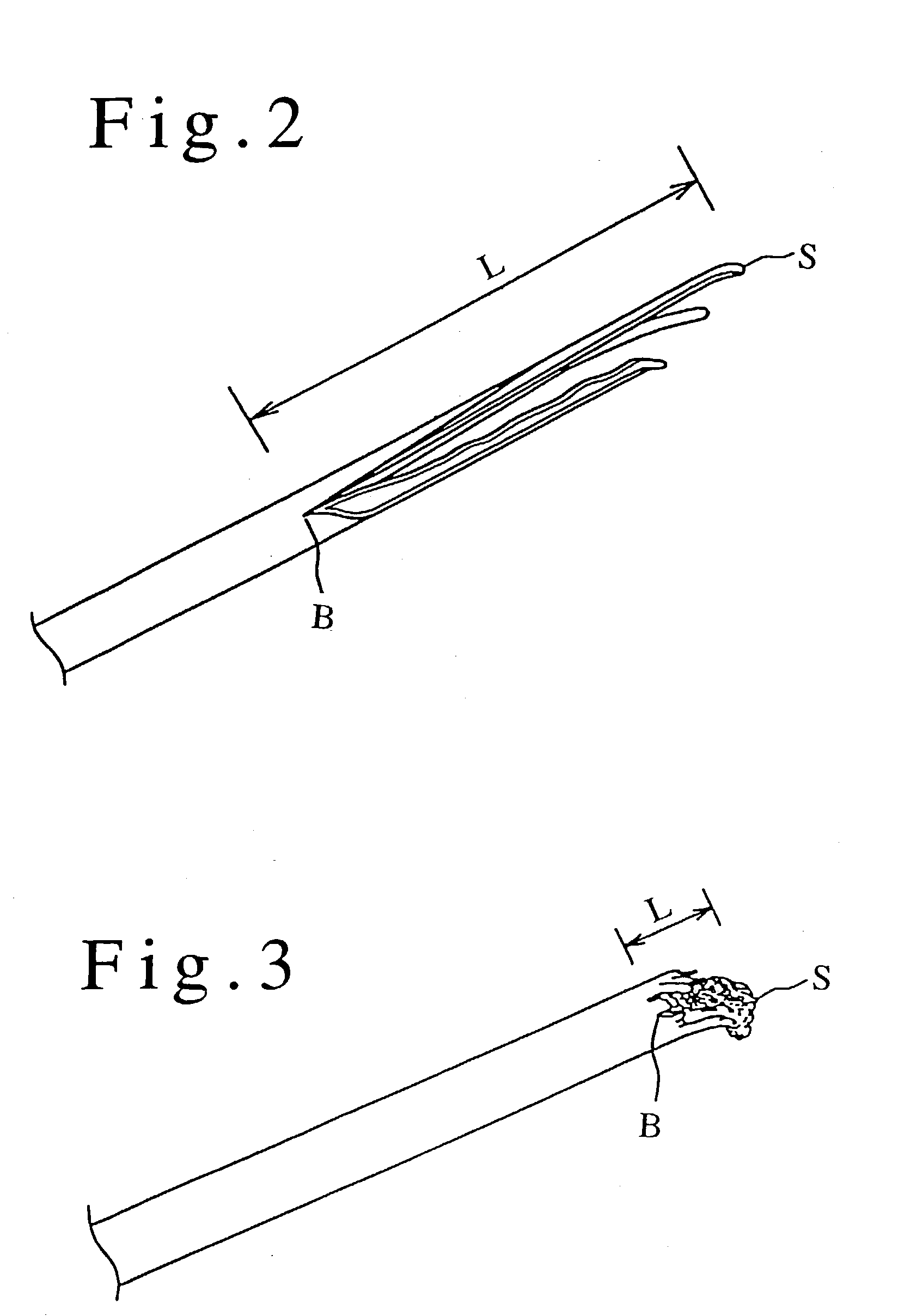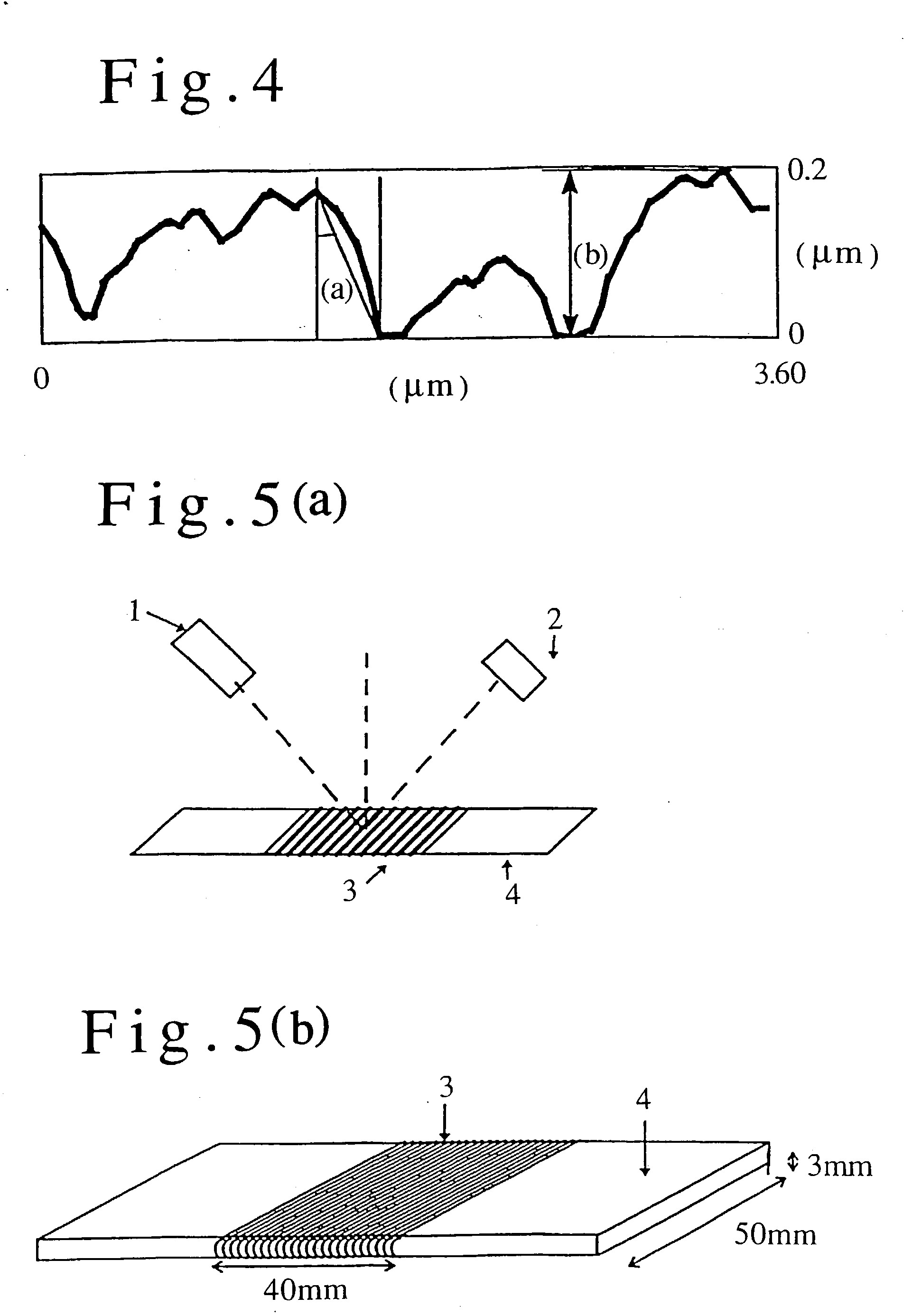Acrylic fiber and a manufacturing process therefor
a technology of acrylic fiber and manufacturing process, which is applied in the direction of yarn, transportation and packaging, synthetic resin layered products, etc., can solve the problems of inadequate solvent displacement inside the fiber, inadequate repulsion of cloths, and excessive oriented fibers with a drawback of deterioration of dyeability
- Summary
- Abstract
- Description
- Claims
- Application Information
AI Technical Summary
Benefits of technology
Problems solved by technology
Method used
Image
Examples
first embodiment
[0044] An acrylic fiber in this invention has a monofilament dry strength of 2.5 to 4.0 cN / dtex, has a monofilament dry elongation of 35 to 50%, and forms a crack with a length of 20 .mu.m or more in its tension rupture lateral surface along the filament axis direction when rupturing the monofilament in a tension test.
[0045] If the monofilament dry strength is lower than 2.5 cN / dtex or the dry elongation is more than 50% in the acrylic fiber, there may be generated many fluffs due to filament breaking during spinning, leading to a deteriorated process passage and significant deterioration in spinnability.
[0046] If the monofilament dry strength is higher than 4.0 cN / dtex or the dry elongation is less than 35%, there may often be inadequate wool-like hand feeling required for an acrylic fiber for an application such as a garment, e.g., a sweater and a home furnishing, e.g., a pile.
[0047] The length of the crack formed along a fiber axis in a tension test is an index indicating differe...
example 1
[0114] A monomer composition consisting of 92 wt % of acrylonitrile and 8 wt % of vinyl acetate was polymerized by aqueous dispersion polymerization using ammonium persulfate-sodium hydrogen sulfite to prepare an acrylonitrile polymer with an average molecular weight of 130,000. The polymer was dissolved in dimethylacetamide to prepare a 24 wt % spinning feed solution.
[0115] The spinning feed solution was discharged into the first coagulation bath consisting of a 50 wt % aqueous dimethylacetamide solution at 40.degree. C. using a spinneret with 40,000 orifice holes and an orifice hole diameter of 60 .mu.m to prepare coagulated filaments. The filaments were drawn from the first coagulation bath with a drawing rate 0.4 times of the discharge linear velocity of the spinning feed solution. Then, the coagulated filaments were immersed into the second coagulation bath consisting of a 50 wt % aqueous dimethylacetamide solution at 40.degree. and was subject to stretching by 1.5 times in the...
example 2
[0118] A staple fiber with a monofilament denier of 3.3 dtex was prepared as described in Example 1, except that the temperatures of the first and the second coagulation bathes were 46.degree. C. and the concentration of the organic solvent was 60 wt %.
[0119] In the above process, the thickness of the skin layer in a coagulated filament drawn from the first coagulation bath was 0.08 .mu.m. The monofilament exhibited a dry strength of 3.5 cN / dtex, a dry elongation of 37%, and the staple fiber exhibited good luster and hand feeling.
[0120] The filament cross section was an essentially perfect circle with a long / short axis ratio of 1.1. Five cracks with lengths of 25 .mu.m, 24 .mu.m, 20 .mu.m, 18 .mu.m and 15 .mu.m along the fiber axis direction were observed in the tension rupture lateral surface.
PUM
| Property | Measurement | Unit |
|---|---|---|
| length | aaaaa | aaaaa |
| elongation | aaaaa | aaaaa |
| tilt angle | aaaaa | aaaaa |
Abstract
Description
Claims
Application Information
 Login to View More
Login to View More - R&D
- Intellectual Property
- Life Sciences
- Materials
- Tech Scout
- Unparalleled Data Quality
- Higher Quality Content
- 60% Fewer Hallucinations
Browse by: Latest US Patents, China's latest patents, Technical Efficacy Thesaurus, Application Domain, Technology Topic, Popular Technical Reports.
© 2025 PatSnap. All rights reserved.Legal|Privacy policy|Modern Slavery Act Transparency Statement|Sitemap|About US| Contact US: help@patsnap.com



